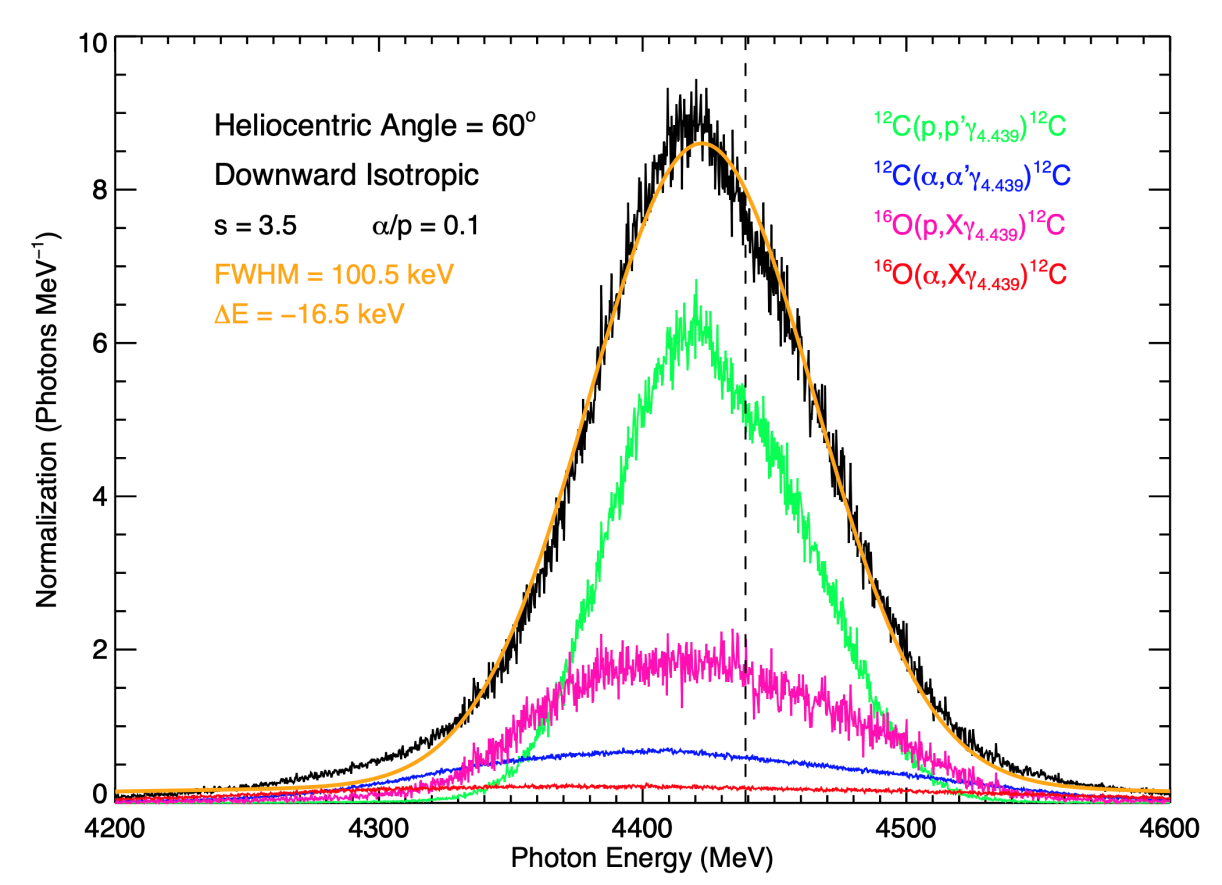A Spectroscopic Method Based on the Shapes of Nuclear Deexcitation γ-Ray Lines in Solar Flares

By with CHEN Wei
Fig. 1 Calculated 4.439 MeV line shape observed at a heliocentric angle of 60° for a downward isotropic angular distribution of energetic particles, following a power-law spectrum with index 3.5, α/p ratio of 0.1. Four kinds of reactions from targets of 12C and 16O are shown in different colors. Best-fitting results are shown in orange curve.
How to determine the ions spectrum is the most difficult problem in the flare γ-ray study. The method like spectroscopic fitting (Chen & Gan, 2012) is physically self-consistent and direct way, but it needs to precondition the abundance of solar atmosphere and the composition of the accelerated particles. In addition, this analysis is relatively complicated and uncertain as the spectrum mixed the joint contribution of energetic electrons and ions.
The γ -ray spectrum in solar flares consists of continuum and amount of deexcitation lines. These deexcitation lines are expected to display moderate Doppler broadened shapes because of the recoiling nucleus deexcited before significant energy loss. The centroid and width of lines contain a wealth of information on the directionality, composition, and spectra of energetic ions as well as properties of the interaction sites (see Fig. 1).
Our previous work (Chen & Gan, 2017) analyzed the 20Ne 1.634 MeV line shape in detail, providing a new tool for studying a flare-accelerated ion spectrum. In this work, the shapes of several solar intense deexcitation γ-ray lines, include 12C 4.439MeV, 16O 6.129MeV, 24Mg 1.369 MeV, and 28Si 1.779 MeV, are calculated and discussed. The deexcitation γ-ray line shape analysis is a straightforward and intuitive process, and only needs to fit the corresponding deexcitation γ-ray lines, which is characterized by a small fitting interval, few photon models, and low degrees of freedom in the fitting process. It is potentially highly valuable for determining accelerated ions in solar flares, especially in future with higher energy resolution and signal-to-noise ratio observations.
This work by Wei Chen and W. Q. Gan has been published in The Astronomical Journal.